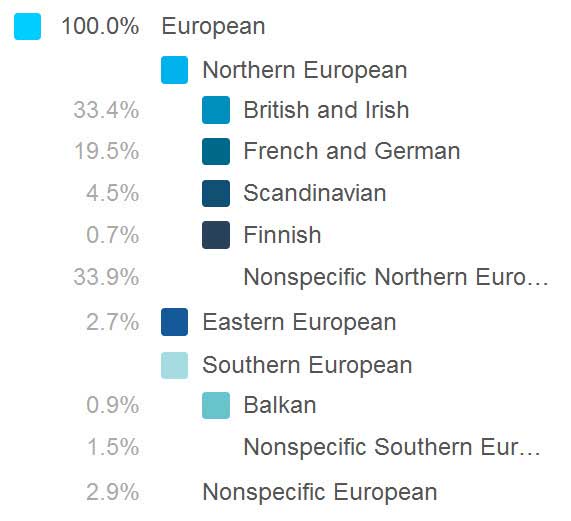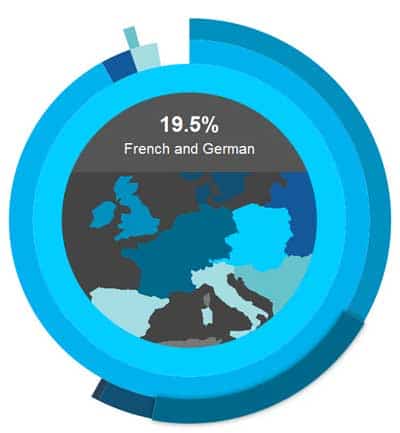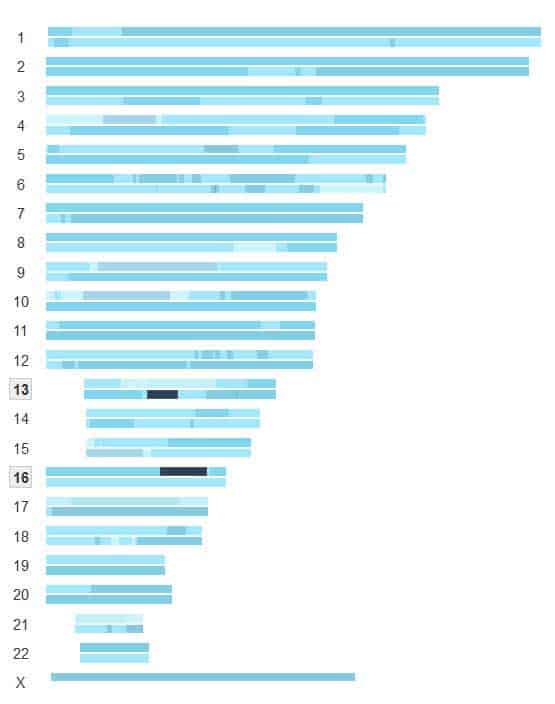
This is my independent review of the Ancestry Composition report, the ethnic ancestry feature of the 23andMe DNA test.
When you have your DNA tested at 23andMe, one of the reports you get is called Ancestry Composition.
It’s a geographic ancestry analysis that tells you what percent of your DNA came from each of 22 worldwide populations. It’s based on the DNA you inherited from all your ancestors on both sides of your family.
In the words of 23andMe the results “reflect where your ancestors lived 500 years ago, before ocean-crossing ships and airplanes came on the scene.”
An Innovative Approach
Perhaps the most innovative part of Ancestry Composition is that it combines the data from published genetic databases with data from 23andMe users to get even more specific results.
For example, anyone with a Northern European background might see British & Irish, French & German, Scandinavian, or Finnish ancestry.
Unlike their old Ancestry Painting, this new report can distinguish Native American from Asian. Plus, the report can now see Ashkenazi Jewish ancestry.
Initially, there is no breakout detail for people with African or Asian ancestry. But updates are already planned to address that limitation.
My Data Example
You can select global, regional, or sub-regional resolutions and also choose conservative, standard, or speculative degrees of confidence. Many early users, including me, have found that the speculative setting is actually quite consistent with their known paper trails.
Here is my sub-regional report as an example. You can see how this breaks down my mix of ancestries by percentages.

The standard Map View shows an intuitive visualization that changes as you select different settings and scroll your mouse over different ancestries.
Here’s what mine looks like when I scroll over the French & German component:

Ancestry Composition is especially enlightening for people of mixed or unknown ancestry. But even someone like me with entirely European ancestry can learn something.
Chromosome View
This is another way of looking at your data that highlights your ancestry on each of your 23 pairs of chromosomes.
For example, when I scroll over my Finnish ancestry, I see that I have it on chromosomes 13 and 16.

In addition to your own results, you can view this ethnic report for every match with whom you are sharing genomes.
For example, if I look though my matches and find one with Finnish ancestry on the same chromosomes, I will get an important clue about that unexplored part of my family tree.
Split View
If you have at least one parent in the 23andMe database that is linked to your account (through the Family Tree feature), you can see this view. It will show you which ancestral components come from your mother and which come from father.
People tell me it’s cool, but both of my parents are deceased so I cannot show you an example.
NOTE: This is a good reminder for people with elderly parents to get them tested NOW, before it’s too late.
Conclusion
Overall, I am impressed with Ancestry Composition. The methodology is described clearly and transparently in a white paper on the web site. As they include more databases and more people get tested, we can expect this tool to become even more powerful and accurate.
Again, this is just one report, along with Relative Finder and the genetic health information that is included in the 23andMe test.
Now that the price has been greatly reduced, almost anyone will find it an attractive bargain. Follow this 23andMe link to learn more.
